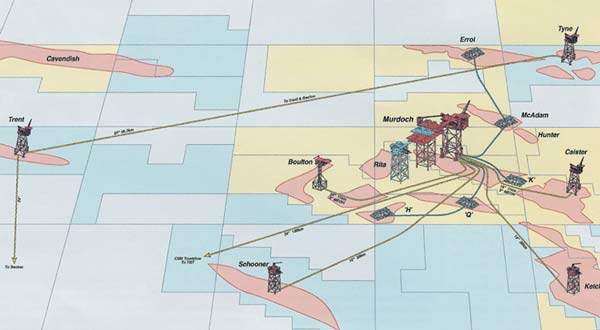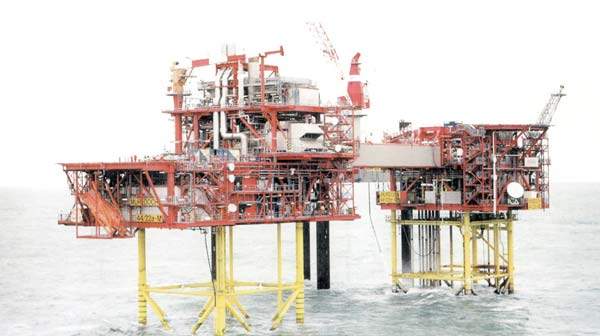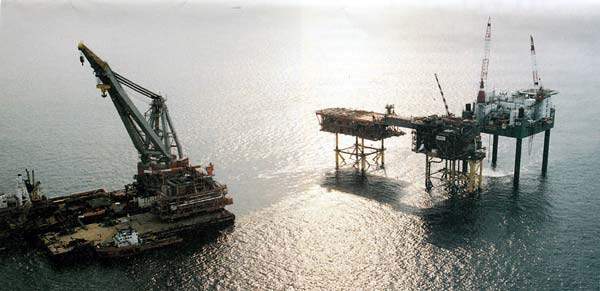Conoco planned to embark on the third stage of the development of its Caister Murdoch System (CMS) following the successful completion of a well in March 2001.
The third stage, CMS3, included development of two wells and was completed in May 2004.
It is anticipated that this could yield an expected future production of more than 80 billion standard cubic feet of gas.
CMS3 comprises the reservoirs McAdam, Murdoch K, and Boulton H and Watt.
It was developed using the production and transportation facilities of the Caister Murdoch System (CMS).
The Caister Murdoch System (CMS3) project was operated by Conoco (UK), which holds a 59.5% stake.
Its partners include GDF Britain (26.4%) and Tullow Exploration (14.1%).
Conoco sells 70% of the light oils produced from the site to the UK, while the remaining 30% is supplied to Europe and the US.
Location
The gas find straddles the Murdoch and Caister licenses, 75 miles (120km) north-east of Theddlethorpe St Helen in Lincolnshire.
The co-venturers in block 44/22a are the operator Conoco (54.5%), Tullow Exploration (34%) and GDF (11.5%), while co-venturers in block 44/23a are Conoco, again as the operator (30%), along with Consort Resources (49%) and GDF (21%).
Caister Murdoch’s initial development followed Conoco’s decision to open up a section of the southern North Sea, designated as Quadrant 44.
Conoco operated the Murdoch field, while Total operated the Caister field. These were the first gas fields to be developed from Carboniferous reservoirs, as opposed to the more commonly produced Rotliegendes gas.
The stream is characterised by up to 3%-volume CO2 and requires equipment for additional processing.
Caister also produces gas from Bunter formations, which has a lower pressure than Carboniferous gas and contains 15% nitrogen, compared to the CO2 in Carboniferous.
Development
It was decided that to develop the reservoirs, an unmanned wellhead platform would be used, located at each field, in order to provide support for the wellheads and trees and house the well-control equipment, as well as allow an accurate testing of the wells individually to ascertain gas and liquid flow rates.
The combined total of reserves in the two fields was approximately 620 billion cubic feet (bcf) of gas and 5.7 million barrels (bbl) of condensate.
The production rate peaked at more than 300 million standard cubic feet per day (MMscfd).
The CMS3 development well located in the southern sector of the UK’s North Sea flowed at a maximum rate of 150MMscfd when it was tested in August 2002.
Murdoch acted as a gathering platform, receiving gas from Caister via an 11km, 16in interfield pipeline.
Both streams were commingled on Murdoch for transmission to the onshore terminal at Theddlethorpe on the Lincolnshire coast. This was through the 185km (115 mile), 26in export pipeline.
In addition, a 4in line was laid to carry the reclaimed methanol mixed with the corrosion inhibitor back to Murdoch and onto Caister.
The Murdoch platform at Block 44/22 of the North Sea in the UK comprises three bridge-linked platforms.
Production
The $600 million (£400 million) Phase 1 of the project (without compression) was designed to encourage production from other fields in the area. This resulted in the expansion of the facilities under the CMS2 phase of development.
This included the installation of a gas-compression platform, bridge-linked to Murdoch to enable the infrastructure, so as to develop the Shell-operated Schooner field. This was followed by Shell’s Ketch field in 1999.
The wellstream from Conoco’s Boulton field was also tied into the CMS2 system.
CMS3 was proposed when the Ensco 80 jack-up exploration rig drilled the well in 131ft (40m) of water in December 2000.
The well took about three months to drill to its depth of over 12,000ft. It encountered approximately 739ft (225m) of gross pay, 170ft (52m) net, in the Carboniferous Westphalian formation.
The well was not tested, as wireline logs confirmed that the high quality of the reservoir is consistent with that of others operated by Conoco in the area.
Known as the ‘K structure’, it will boost potential reserves for the area to nearly 500 million cubic feet.
The K structure was first identified in 1995 from 3D seismic data. Although adjacent to the existing reservoirs, the K prospect is separate and in a younger geological layer.
Development plans currently centre on subsea wellheads installed on each of the five subsea reservoirs, tied back to the existing Murdoch platform and CMS infrastructure.
A compression module will be fitted to the existing Murdoch platform, with a new accommodation platform alongside.










